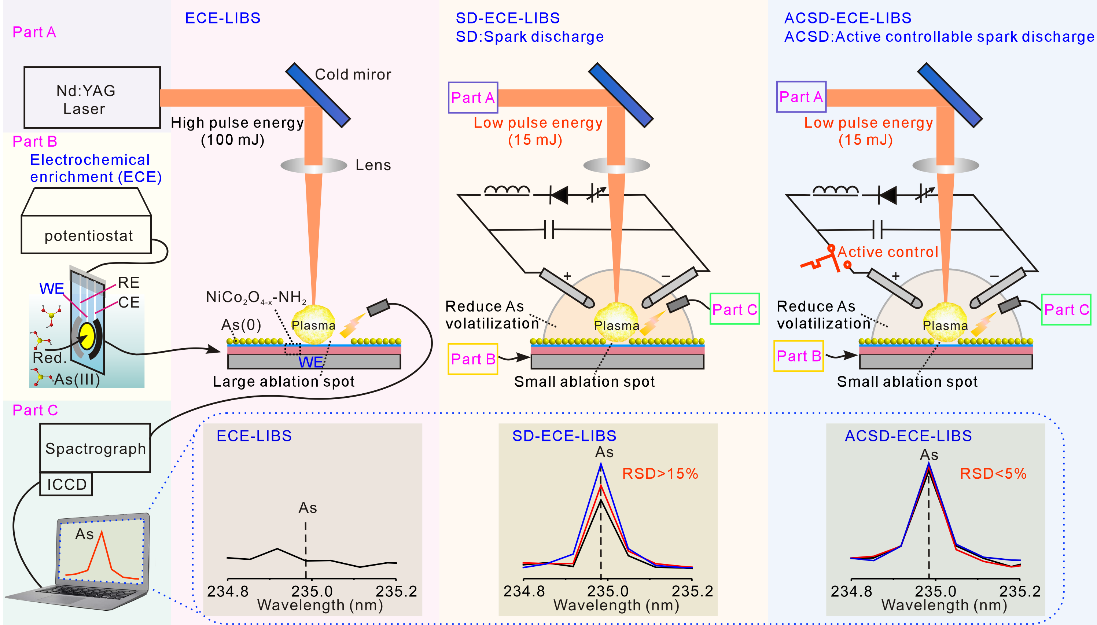Chinese scientists developed a useful approach for highly sensitive and stable detection of As(III) and Hg(II).
This work was done by a research group led by Prof. HUANG Xingjiu in the Institute of Intelligent Machines, Hefei Institutes of Physical Science under the collaboration with Prof. ZHAO Nanjing in Anhui Institute of Optics and Fine Mechanics, Hefei Institutes of Physical Science.
Laser-induced breakdown spectroscopy (LIBS) has emerged as a promising technology for its unique advantages and application in analysis of environmental samples.
However,there are tremendous challenges for LIBS to evaluate trace arsenic and mercury, which possesses high volatility compared to other heavy metals. Before the plasma signal is received, arsenic and mercury may have partially volatilized using the previously reported high pulse energy (normally 100 mJ), then resulting in an ultra-high limit of detection (LOD) or even no signal of arsenic and mercury.
The team developed a new approach—low-pulse-energy (15 mJ) LIBS assisted by active controllable spark discharge (ACSD) and electrochemical enrichment (ECE) for the highly sensitive and stable analysis of As(III) and Hg(II) in water and soil.
A low pulse energy (15 mJ) instead of high pulse energy (typically 100 mJ) reported in previous work was applied to reducing the volatilization of arsenic and mercury as well as downsizing ablation spot of the sample.
Active controllable spark discharge made up for the insufficiency in the content of excited arsenic or mercury plasma resulting from low pulse energy (15 mJ). Importantly, active controllable spark discharge, which was added high-speed switch to control the delay time between spark discharge and laser, overcame the instability of traditional spark discharge-LIBS and obtained a stable plasma source.
Efficient and fast preconcentration of As(III) was achieved by electrochemical enrichment on the electrode modified using flower-like NiCo2O4-x-NH2 nanosheets with regulable oxygen vacancies.
As a result, a high sensitivity of 3.35 counts ppb-1, low LOD of 8.69 ppb and excellent stability (relative standard deviation is lower than 5%) for As(III) were exhibited.
This method overcomes the difficulty of LIBS in detecting As(III) and Hg(II) resulting from their high volatilization. This investigation may provide a simple and effective method for monitoring of heavy metal ions in the environment.

Schematic of ECE-LIBS device, SD-ECE-LIBS device and ACSD-ECE-LIBS device for detection of As(III). (Imaged by JIANG Min)
Contact:
ZHOU Shu
Hefei Institutes of Physical Science
Email: zhous@hfcas.ac.cn
 Tel: +86-551-65591206
Tel: +86-551-65591206
 Fax: +86-551-65591270
Fax: +86-551-65591270
 Emai: zhous@hfcas.ac.cn
Emai: zhous@hfcas.ac.cn
 350 Shushanhu Road
350 Shushanhu Road